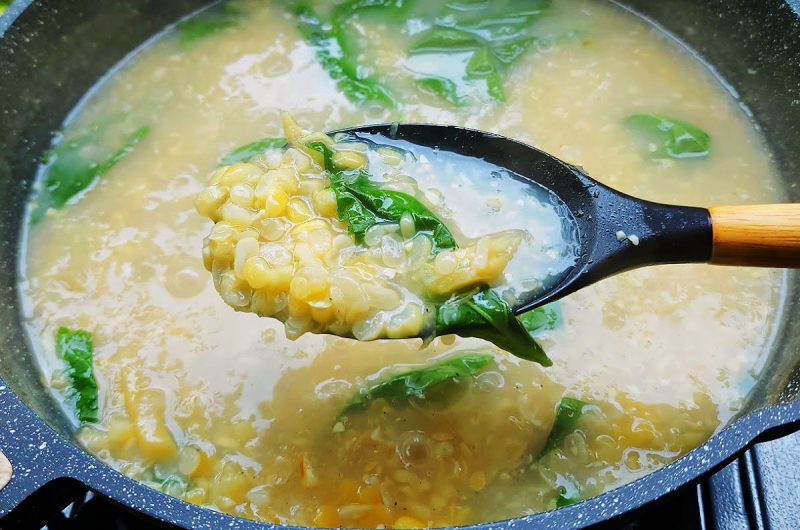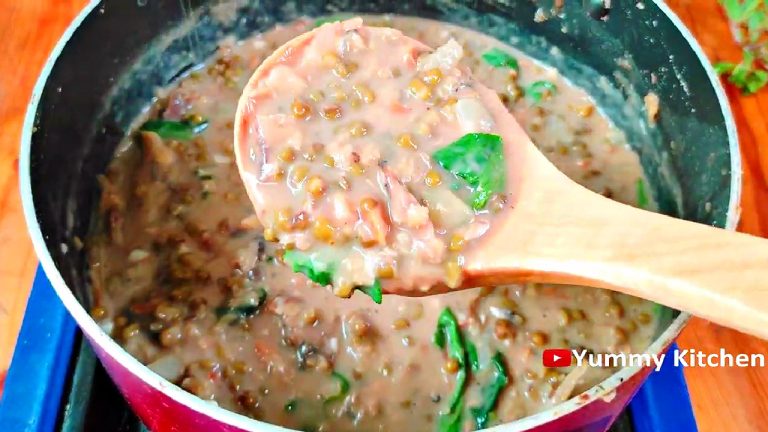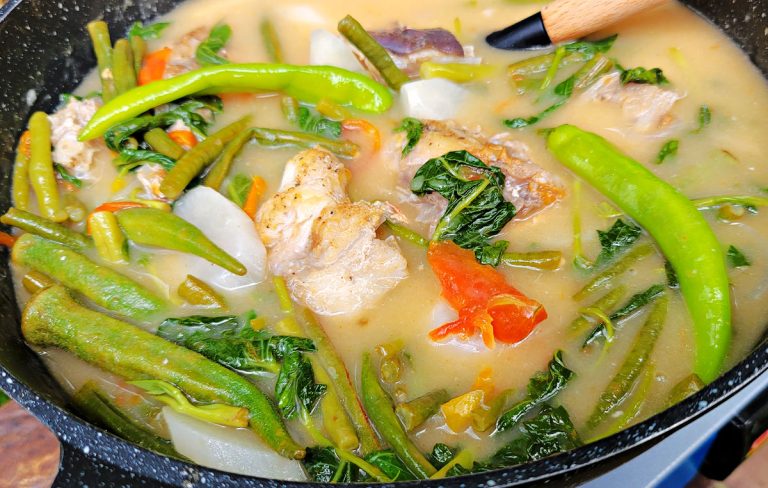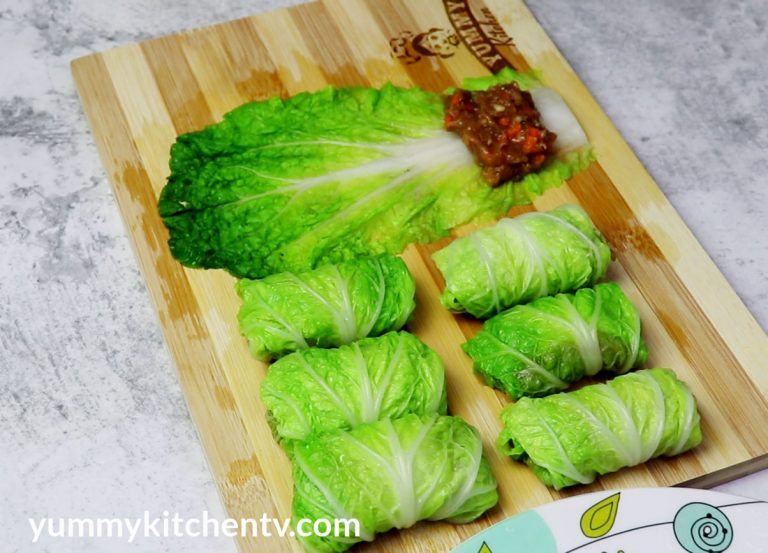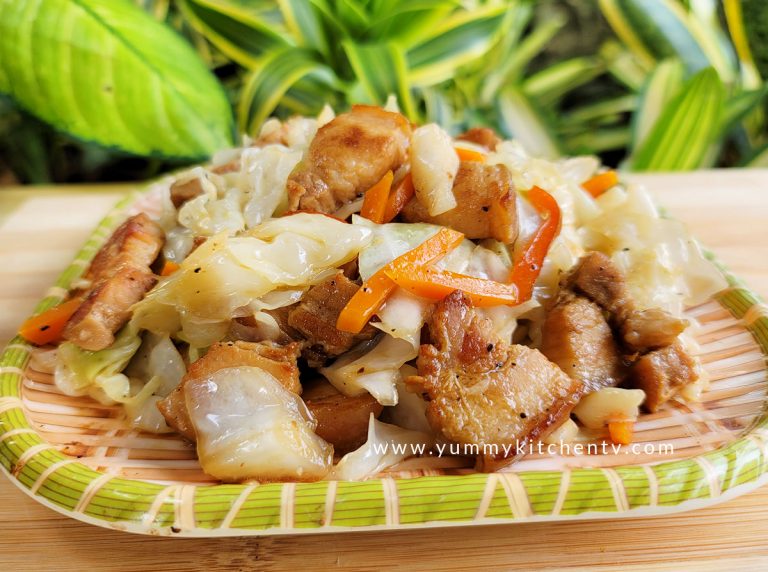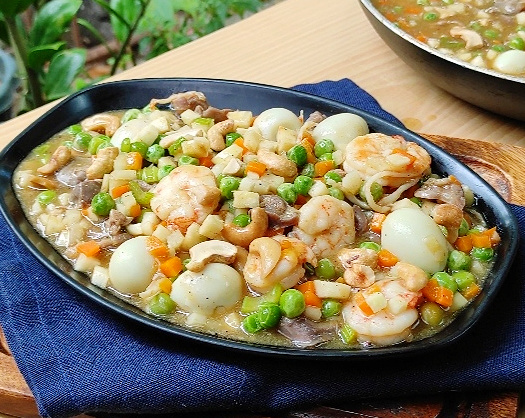Ginisang Mais
Ginisang mais is a popular soup in Philippense, that have a variety of flavours with sweetness of corn, sworeness of ginger and other spices. It is made by boiling young corn, onion, garlic and other spices together. Whether enjoyed as a hearty soup or a satisfying snack, ginisang mais invites you to savor the warmth and authenticity of every spoonful.
Ginisang Mais Recipe
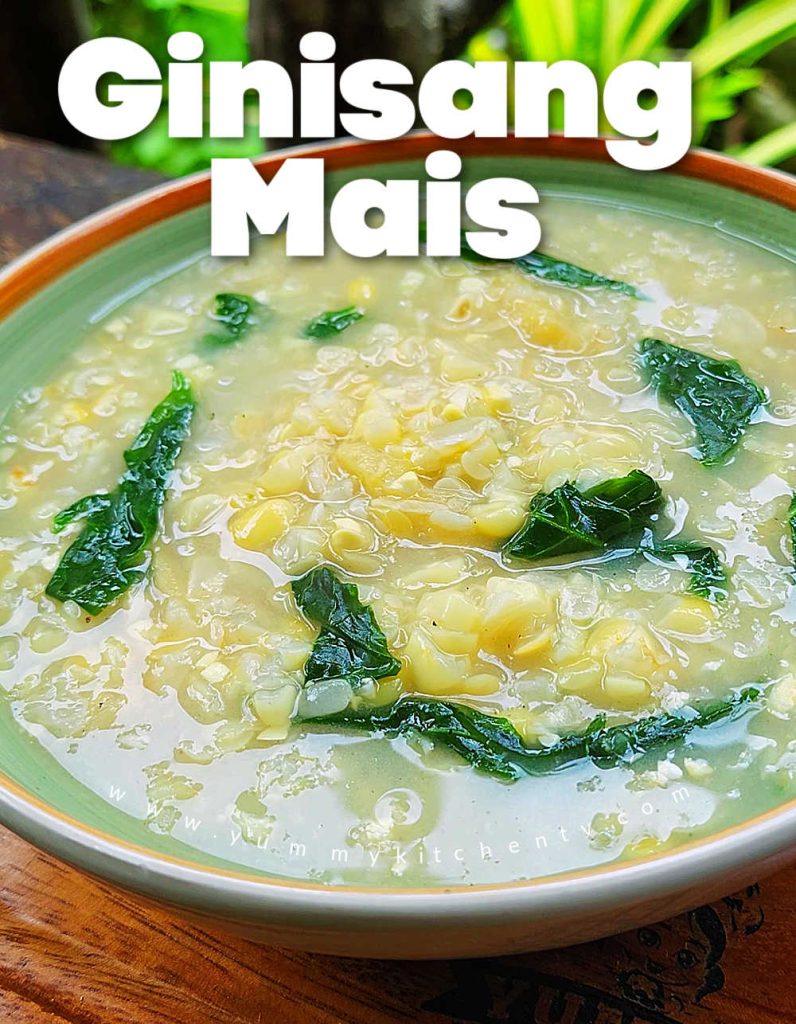
Ingredients:
- 1 kilo young corn
- 1 medium onion (chopped)
- 5 cloves garlic (minced)
- 1 thumb ginger (chopped)
- salt to taste
- black pepper to taste
- 1 piece chicken broth cube
- chili leaves
Procedure:
- Wash and prepare the young corn cobs. Shave of the kernels gently using a knife. Extract the juice from the corn kernels by squeezing using your hands. Then, transfer the kernels to a bowl and the juice to a separate bowl.
- Heat some oil in a pan. Add the garlic, onions, and ginger and saute for a few minutes. Then, add the corn kernels and saute. Season with some salt and pepper to taste. Add enough water to create a broth. Add the chicken broth cube and stir until dissolved. After 10 minutes, add the extracted corn juice to thicken up the soup.
- Add the chili leaves and let it simmer for five minutes.
- Transfer the ginisang mais to a serving bowl and enjoy while still simmering hot. Yum!
What is Corn?
Corn, also known as maize, is a cereal grain that originates from the Americas and is widely cultivated for its edible kernels. It is one of the most important staple crops in many parts of the world. The kernels of corn are typically yellow, but they can also come in various colors such as white, red, and even blue. Corn is incredibly versatile and can be consumed in various forms, including fresh, canned, dried, and ground into flour.
Corn is a common ingredient in a wide range of dishes, such as salads, soups, stews, tortillas, and various processed foods. Corn is also used to produce corn oil, corn syrup, and cornstarch, which are important ingredients in many processed foods and food products.
As one of the carbohydrate alternatives next to rice, corn is a staple ingredient in many Filipino dishes. One of the most iconic corn-based dishes is “Ginisang Mais,” a soup made from young corn kernels, often accompanied by chicken broth and vegetables. Another popular dish is “Binatog,” which consists of boiled white corn kernels topped with grated coconut and salt or sugar. These dishes showcase the versatility of corn in Filipino cooking.
Beyond its culinary uses, corn has also become a part of Filipino snacks and street food culture. Grilled corn-on-the-cob, known as “inihaw na mais,” is a beloved treat enjoyed by many Filipinos. Corn is also processed into various snacks like corn chips and popcorn, which are commonly enjoyed during leisure time or while watching movies. In some regions, “Pahiyas Festival” features colorful decorations made from corn husks as a tribute to the harvest.
Ginisang Mais
If you ask me which carb would I prefer after rice, I would have a hard time choosing between bread and corn. While the two have very distinct characteristics, the corn in the form of kernels gives the illusion of eating rice but in a better and more filling way.
I usually enjoy corn which cheese powder and melted butter, but rainy days always ask for something hot and soupy. Instead of just plain broth, ginisang mais is the perfect dish to eat to soothe that lack of heat, especially this bagyo season. What I love most about this dish is that it is almost similar to an arroz caldo, but has an additional natural sweetness attached to it. Not only it was savoury, it was also a blank canvas in which you can add any protein or topping you like.
To give you the warmth of love you deserve, you should definitely make this dish today. If you wanna know how to make ginisang mais, continue reading and follow the quick steps below.
How to Cook Ginisang Mais
Ginisang mais is as easy as other stir fried vegetables. But instead of a dried and oily one, this dish is delightfuly brothy which can bring warmness both to the soul and tummy.
Start by washing and preparing tender young corn cobs. Using a knife, gently shave off the kernels from the cobs. I usually use a knife to do this part but you can also use a peeler if it is more convenient for you.
Prepare your arms a bit as you will need extra strength for this next step. To extract the corn’s extract, give the kernels a gentle squeeze to collect their juice. Place the kernels in one bowl and the juice in another, ensuring none of nature’s goodness goes to waste. Fun fact: Did you know that this extract is made of starch? We will use this extract later to naturally thicken up the broth.
Next, let’s simplify the process further. Heat some oil in a pan, then add the aromatic trio of garlic, onion, a ginger. Sauté these ingredients for a brief moment until they release their enticing fragrance. Now, toss in the corn kernels and let them mingle with the aromatic blend. Season to your preference with a pinch of salt and a dash of black pepper.
As the flavors meld, it’s time to introduce a hack to enhance the soup’s depth. Instead of adding water directly, use pre-made chicken broth to intensify the taste effortlessly. Drop in a single chicken broth cube and stir it into the mix until it dissolves seamlessly. After allowing the ingredients to harmonize for about 10 minutes, introduce the extracted corn juice. This ingenious addition will naturally thicken the soup, adding a delightful texture and flavor.
As a final touch, add chili leaves for a hint of zesty vibrancy. These leaves contribute a dash of color and a mild kick to elevate the experience. Let the flavors marry by letting the soup simmer for a mere five minutes.
When all the ingredients come together, then the dish is ready! Transfer this warm dish to a serving bowl, and have a small scoop while it is still steaming hot. Yum!
Ginisang Mais Recipe in Tagalog
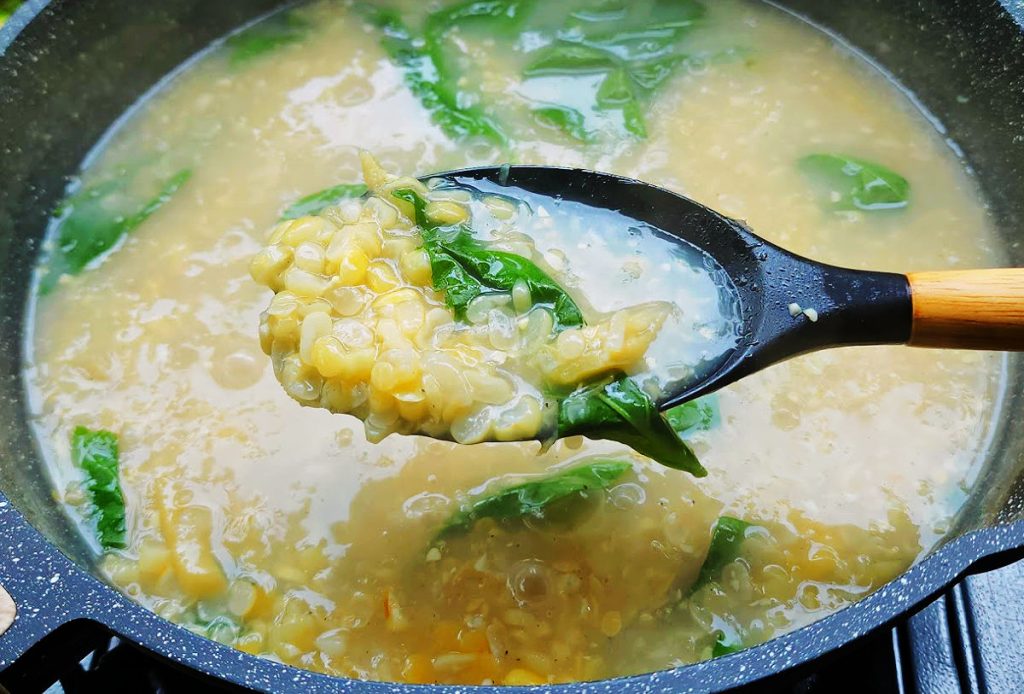
Mga Sangkap:
- 1 kilong mais
- 1 sibuyas (hiniwa)
- 5 butil ng bawang (hiniwa)
- 1 thumb ng luya (hiniwa)
- asin
- paminta
- 1 chicken broth cube
- dahon ng sili
Paano Lutuin:
1. Hugasan at ihanda ang mga mais. Alisin ang mga butil sa cob gamit ang kutsilyo. Pigain ang mga butil ng mais gamit ang iyong mga kamay para makuha ang extract nito. Ilipat ang mga butil sa isang bowl at ang extract sa isa pang bowl.
2. Magpainit ng mantika sa kawali. Ilagay ang bawang, sibuyas, at luya, at igisa ng ilang minuto. Sunod na idagdag ang mga butil ng mais at saka igisa. Timplahan ng asin at paminta. Maglagay ng sapat na tubig para magkaroon ng sabaw. Ilagay ang chicken broth cube at haluin para matunaw. Pagkatapos ng 10 minuto, ilagay ang extract ng mais para lumapot ang sabaw.
3. Ilagay ang mga dahon ng sili at hayaang maluto ng limang minuto.
4. Ilipat ang ginisang mais sa serving bowl. Enjoyin ito habang mainit-init pa. Yum!
